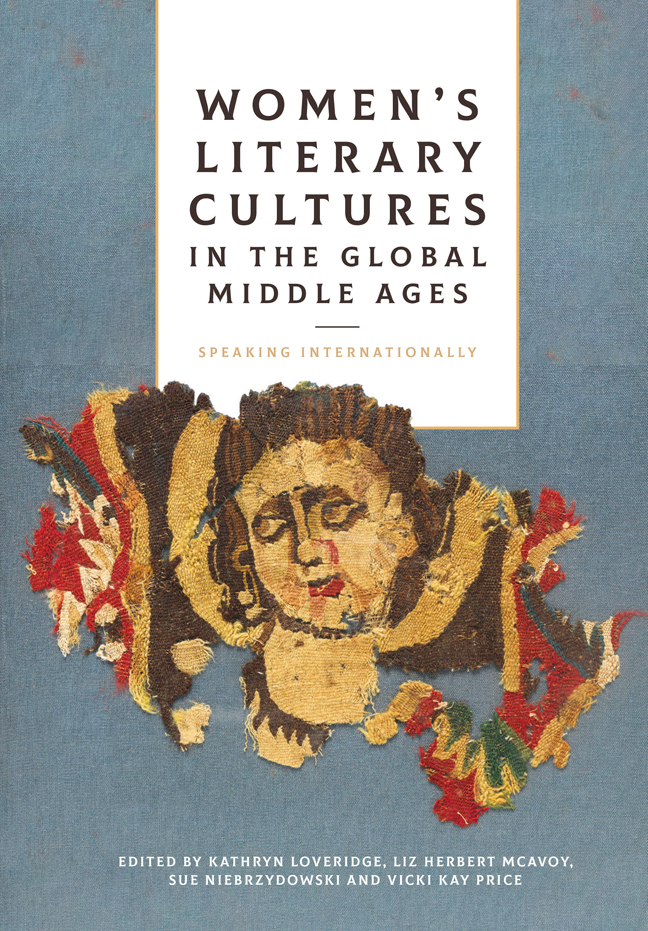Book contents
- Frontmatter
- Contents
- Foreword
- Acknowledgements
- List of Abbreviations
- Book part
- 1 Comparison and Dialogue
- 2 Constructing Gender and Genre
- 3 Saintly Performance and Marian Piety
- 4 Evidence and the Archives: Revisiting and Reconsidering
- Afterword: Intersectionality and Coalitions
- List of Contributors
- Bibliography
- Index
- Gender in the Middle Ages
3 - Women's Writing in the Japanese Heian Period: A Medieval Dialogue Between the East and West
Published online by Cambridge University Press: 09 January 2024
- Frontmatter
- Contents
- Foreword
- Acknowledgements
- List of Abbreviations
- Book part
- 1 Comparison and Dialogue
- 2 Constructing Gender and Genre
- 3 Saintly Performance and Marian Piety
- 4 Evidence and the Archives: Revisiting and Reconsidering
- Afterword: Intersectionality and Coalitions
- List of Contributors
- Bibliography
- Index
- Gender in the Middle Ages
Summary
For the past two decades of the twenty-first century, scholars of the European middle ages have engaged in vibrant dialogue concerning the history of medieval women's literary culture, and such endeavour has led to a growing interest in exploring women's writings within more global contexts and from more varied perspectives: textual, conceptual, historical, social and cultural. Such preoccupations have also given rise to a deeper exploration of such topics as women's roles as patrons, readers, scribes, compilers as well as authors and subjects of the texts of others. Within this milieu, focusing on the question of women's voices, language and writing, this essay introduces Japanese women's writing of the Heian period (794–1185), with some references to a mystical text of a late thirteenth-century German nun and an autobiography written by a lay woman in early fifteenth-century England. Like the two previous essays in this present volume, it will do so as a concerted effort to produce a fruitful dialogue between women's literary traditions, in this case of the east and west.
HEIAN LITERATURE AND ITS CONTEXT
The Heian period (794–1185) is considered to be the summit of the Japanese imperial court with its capital in Kyoto. It is noted for the flowering of its poetry and other forms of literature, with a number of works produced by women, such as Murasaki Shikibu, whose The Tale of Genji can probably boast of being one of the world's masterpieces; Sei Shōnagon, author of The Pillow Book; and Michitsuna's Mother, whose diary entitled Kagerō Diary is the focus of this present essay.
In Japanese literary history, a major shift took place in this Heian period. Since the early classic period (around the sixth century), Japanese literature had been heavily influenced by cultural contact with China and its literature written in Chinese characters. Among a variety of literary genres, poetry was and has been most flourishing in Japanese literature. During the preceding Nara period and the early Heian period, the court favoured Chinese-style poetry (kanshi), written with Chinese characters. In the ninth century, however, Japan stopped sending official envoys to the Tang dynasty of China. This severing of ties, combined with Japan's geographic isolation (with the islands detached from the Eurasian continent), enabled the Heian court to nurture native culture and look inward, synthesising Chinese poetic styles and techniques with local traditions.
- Type
- Chapter
- Information
- Women's Literary Cultures in the Global Middle AgesSpeaking Internationally, pp. 61 - 80Publisher: Boydell & BrewerPrint publication year: 2023



